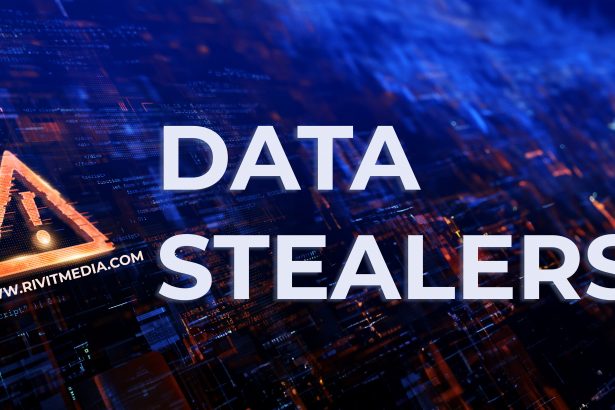MassJacker is a stealthy and dangerous Trojan belonging to the “clipper malware” category, which specializes in silently infiltrating systems and stealing sensitive user information. Unlike traditional viruses, clippers like MassJacker are designed to monitor and hijack clipboard activity—specifically, data such as cryptocurrency wallet addresses. This enables cybercriminals to redirect financial transactions to their own accounts without the user’s knowledge.
MassJacker Threat Summary
| Attribute | Details |
|---|---|
| Threat Name | MassJacker |
| Threat Type | Trojan / Clipper Malware |
| Associated Emails | Not directly associated with specific emails, but often spread via phishing |
| Detection Names | Trojan.Clipper.MassJacker, Win32:ClipBanker, Malware.GenericKD |
| Symptoms of Infection | Slow system performance, altered clipboard data, missing credentials |
| Damage Potential | Theft of crypto wallet addresses, stolen logins, privacy breach |
| Distribution Methods | Cracked software, phishing emails, fake software updates, drive-by downloads |
| Danger Level | High |
What makes MassJacker especially insidious is its multi-layered infection strategy and its ability to remain hidden. Once it infects a machine, it quickly embeds itself into system processes, harvesting a wide range of personal data—login credentials, browser cookies, system metadata, and more. This data is then funneled to a command-and-control (C2) server, enabling remote exploitation.
Recent reports indicate that the malware is being spread through cracked software and phishing campaigns, particularly targeting users searching for pirated software. These users are enticed into downloading what appears to be free or premium applications, only to unknowingly execute the MassJacker payload along with the installer.
How Does MassJacker Infect Systems?
MassJacker uses social engineering and exploit-based methods to gain access to devices:
- Bundled Software: The malware is often hidden within cracked or pirated software downloaded from shady websites. The moment users run the installer, MassJacker is deployed.
- Phishing Emails: Emails disguised as legitimate alerts or invoices often carry infected attachments or links. These can deploy the Trojan once the user interacts with them.
- Drive-By Downloads: Simply visiting a compromised website with outdated browser components can lead to an automatic, silent download of MassJacker.
- Fake Software Updates: Pop-up ads claiming to be Flash Player or browser updates trick users into downloading the malware under the pretense of enhancing system functionality.
Once inside, MassJacker remains undetected by blending in with legitimate system processes. It continuously scans for valuable information to steal and transmits this data to its operators for malicious use. Victims can lose access to accounts, suffer financial loss through redirected cryptocurrency transactions, or become targets for further cyber attacks.
Manual Removal of Info-Stealers (For experienced users)
Step 1: Boot into Safe Mode with Networking
Info-stealers often run in the background, making removal difficult. Restarting in Safe Mode with Networking ensures they don’t load at startup.
For Windows 10/11
- Press Win + R, type msconfig, and hit Enter.
- In the System Configuration window, go to the Boot tab.
- Check Safe boot → Network.
- Click Apply > OK > Restart.
For Windows 7/8
- Restart your PC and press F8 before Windows loads.
- Select Safe Mode with Networking and press Enter.
Step 2: Stop Malicious Processes in Task Manager
- Press Ctrl + Shift + Esc to open Task Manager.
- Look for unusual processes (high CPU usage, unknown names).
- Right-click on them and select End Task.
Common Info-Stealer Process Names:
StealC.exeRedLine.exeVidar.exeClipBanker.exeRandomized system-like names
Step 3: Uninstall Suspicious Applications
- Press Win + R, type appwiz.cpl, and press Enter.
- Locate any suspicious or unknown programs.
- Right-click and select Uninstall.
Step 4: Delete Malicious Files and Registry Entries
Info-stealers often store files in hidden locations.
Delete Suspicious Files
- Open File Explorer and navigate to:
C:\Users\YourUser\AppData\LocalC:\Users\YourUser\AppData\RoamingC:\ProgramDataC:\Windows\Temp
- Delete any suspicious folders with randomized names.
Remove Malicious Registry Entries
- Press Win + R, type regedit, and hit Enter.
- Navigate to:
HKEY_LOCAL_MACHINE\Software\Microsoft\Windows\CurrentVersion\RunHKEY_CURRENT_USER\Software\Microsoft\Windows\CurrentVersion\Run
- Delete suspicious registry keys (e.g.,
StealerLoader,TrojanRun).
Step 5: Reset Browsers and Flush DNS
Since info-stealers target browsers, clearing stored credentials is essential.
Reset Browser Data
- Open Chrome, Edge, or Firefox.
- Go to Settings → Privacy & Security → Clear Browsing Data.
- Select Passwords, Cookies, and Cached files → Click Clear Data.
Flush DNS Cache
- Open Command Prompt as Administrator.
- Type the following commands and press Enter:bashCopyEdit
ipconfig /flushdns ipconfig /release ipconfig /renew - Restart your computer.
Step 6: Scan for Rootkits
Some info-stealers use rootkit techniques to stay hidden.
- Download Microsoft Safety Scanner or Malwarebytes Anti-Rootkit.
- Perform a deep system scan.
- Remove any detected threats.
Step 7: Change All Passwords & Enable 2FA
Since credentials may have been stolen, update passwords immediately for:
- Email accounts
- Banking/finance sites
- Social media accounts
- Cryptocurrency wallets
- Work and business logins
Enable two-factor authentication (2FA) for extra security.
Automatic Removal with SpyHunter (Recommended)
(For users who want a fast, reliable removal solution)
SpyHunter is an advanced malware removal tool designed to detect and eliminate info-stealers, trojans, and spyware.
Step 1: Download SpyHunter
Click Here to Download SpyHunter
Step 2: Install and Launch SpyHunter
- Open the SpyHunter-Installer.exe file from your Downloads folder.
- Follow the on-screen instructions.
- Launch SpyHunter after installation.
Step 3: Scan Your System for Info-Stealers
- Click “Start Scan” to perform a deep scan.
- SpyHunter will identify all malware-related files.
- Click “Remove” to eliminate detected threats.
Step 4: Enable SpyHunter’s Real-Time Protection
- Go to Settings → Enable Real-Time Protection.
- This prevents future infections.
How to Prevent Info-Stealer Infections
- Avoid Cracked Software & Torrents – These often contain malware.
- Use Strong, Unique Passwords – Consider a password manager.
- Enable Two-Factor Authentication (2FA) – Protects against account theft.
- Keep Windows & Software Updated – Security updates fix vulnerabilities.
- Beware of Phishing Emails – Do not click unknown links or attachments.
- Use a Reliable Anti-Malware Solution – SpyHunter detects and removes threats in real time.
Conclusion
MassJacker represents a serious cybersecurity threat, especially to users involved with cryptocurrency or those prone to downloading pirated software. Its stealthy nature and ability to silently steal sensitive information make it one of the more dangerous Trojans currently in circulation. Understanding how it spreads and the symptoms of infection is critical to recognizing its presence before significant damage occurs.




